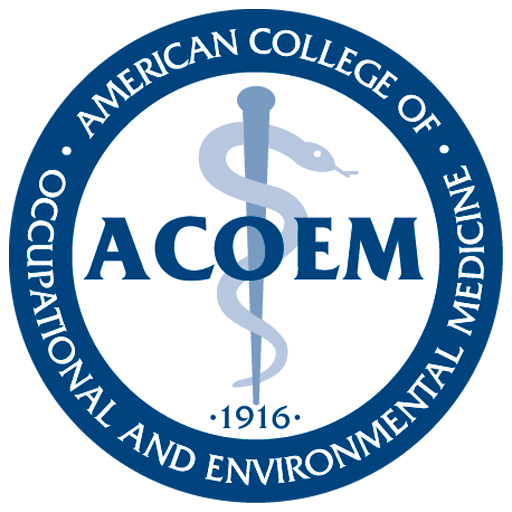
02: Care of the Ill or Injured Worker
What is Toxicology?
People can be exposed to toxic substances at the workplace, at home, or in the environment. Some patients may present at the primary care provider’s office with hidden symptoms that turn out to be related to toxic exposure. Others know they were exposed to a particular compound at work or think that their symptoms might have something to do with their jobs. Whether working in a foundry, chemical plant, fast food restaurant, or office environment, toxic exposures can be the cause of symptoms.
Toxicology involves the identification, management, and prevention of harmful effects from chemicals, radiation, or biological hazards on human and other living organisms. Paracelsus (1493–1541), the father of toxicology, recognized that “the dose makes the poison.” Some substances that can be toxic at high exposure levels may cause no effect at low levels. For example, exposure to high levels of inhaled formaldehyde may cause new headache, nausea, and vomiting; whereas, lower levels may not cause any symptoms in the majority of those exposed. However, the same low levels of formaldehyde exposure may cause sensitization in some individuals, resulting in allergic contact dermatitis. Toxicity may also vary based on the intrinsic toxicity of the substance, route of exposure, amount absorbed, or amount metabolized or excreted.
History and Exposure Documentation
When evaluating a patient with concerns about a toxic exposure, it is important to take a thorough symptom history and to understand when and how the individual was exposed. For a chemical or hazard to cause a toxic effect, it needs to have direct contact with the individual or be absorbed into the body in sufficient quantities. Occupational exposures such as silica (found in industries ranging from road construction to foundries) or beryllium (used in many industries, such as airplane parts) occur most frequently through inhalation and less commonly through ingestion or dermal exposure.
Once a toxic exposure is documented, the provider must determine whether the patient develops new symptoms or significant aggravation of symptoms consistent with that exposure. Multiple online resources, such as Toxnet or PubMed, can help providers identify the adverse health effects of, or symptoms likely to be caused by, a chemical or substance at a particular dose and route of exposure. Local poison control centers, occupational medicine physicians, and medical toxicologists also serve as resources.
Measurement Principles
The concentration of certain substances, such as lead, in the environment can be measured in samples such as air or water by an industrial hygienist or other specialist. If the exposure is recent or ongoing, some chemicals can also be measured in individuals’ blood or urine, which may be better markers for determining levels of exposure and health effects. For example, a blood lead level is the best biomarker for confirming acute lead health effects. Other chemicals, such as benzene, a solvent, are cleared so rapidly from the body that blood levels are not helpful.
These environmental exposure levels can be compared to permissible exposure levels (PELs) issued by the Occupational Safety and Health Administration (OSHA) or exposure guidelines produced by the Environmental Protection Agency. Occupational medicine physicians and industrial hygienists work with employers to minimize exposure in the workplace. In one instance, I was working with employees who had elevated lead levels and signs of lead toxicity as a result of manufacturing lead sinkers used in the fishing industry. When I called the company’s attention to the problem, it switched from using lead to zinc.
Exposure Mitigation
Companies can mitigate toxic exposures in a variety of ways. Most directly, they can replace toxic substances with less toxic substances. They can also institute engineering controls, such as building enclosures around hazardous processes. These are generally better methods of exposure control than administrative measures (such as better clean-up procedures or job rotation) or personal protective equipment (PPE), which requires the employee to change his or her behavior. Once a toxin has been identified in the workplace, a variety of controls can be put into place to ameliorate its effects: Depending on the chemical, workers may use PPE such as gloves or respirators, for example.
Types of Toxic Exposures
Irritant Gasses
Exposure to irritant gasses, such as chlorine or ammonia, may cause eye, nose and throat, or skin irritation or shortness of breath. Symptoms are dose related, and higher-intensity exposure for longer durations results in greater toxicity. Most of the OSHA PELs are set to avoid chemical irritant effects, and exposure at levels below the OSHA PEL typically will not cause irritant symptoms. Still, at high-level exposure, highly water-soluble gases such as ammonia and sulfur dioxide cause upper respiratory symptoms. They dissolve quickly on mucosal surfaces and are filtered by the nose or upper airways.
Gasses with low water solubility, such as nitrogen dioxide and phosgene, are more likely to enter the bronchioles and alveoli and can cause acute lung injury without accompanying upper respiratory symptoms. However, extremely high-level exposure to ammonia and sulfur dioxide may also cause lower respiratory symptoms. Large particles > 10 microns tend to be filtered by the upper respiratory tract; small particles are more likely to reach the alveoli. Some gases, such as carbon monoxide and cyanide may cause significant systemic toxicity without any irritant effects.
Metals
Metals such as lead, beryllium, manganese, arsenic, and others may cause a variety of symptoms. Acute arsenic exposure can cause multisystem effects including gastrointestinal complaints, hypotension, and cardiac or neurologic effects. Chronic arsenic exposure has been associated with multiple health issues, including skin hyperpigmentation and hyperkeratosis; peripheral neuropathy; increased cardiovascular mortality; and skin, lung, and bladder cancers. Beryllium exposure, commonly found in advanced electronics and aerospace manufacturing, may cause acute irritant symptoms and chronic beryllium disease with dyspnea and lung infiltrates. Lead is readily absorbed through inhalation and ingestion. Children are more susceptible to low-level lead poisoning, which can cause cognitive and developmental delays.
High-level acute lead exposure may result in multiple symptoms including abdominal pain, nausea and vomiting, headache, confusion, encephalopathy, seizures, abdominal pain, and constipation. High-level inhaled acute mercury exposure may cause cough, dyspnea, mouth irritation, and gastrointestinal complaints.
Solvents
Solvents are used in many commercial products and industries, particularly in manufacturing operations where these liquids are used for cleaning. Because solvents are volatile, the major route of exposure is inhalation. Toxicity typically depends on lipid solubility and affects lipid- rich tissue such as that found in the brain and nervous system. High-level acute exposure causes acute solvent syndrome with symptoms similar to acute alcohol intoxication. Some solvents, such as carbon tetrachloride or trichloroethylene, may cause liver damage. Benzene exposure may cause aplastic anemia, myelodysplasia, and leukemia.
Radiation
Radiation is typically divided into nonionizing or ionizing radiation. High-dose exposure to nonionizing radiation, such as microwaves, causes thermal injury such as skin burns and eye-watering or a gritty sensation. Ultraviolet radiation can cause photokeratoconjunctivitis in welders (called flash burn or welder’s flash), as well as cataracts, sunburn, actinic keratosis, basal cell carcinomas, squamous cell carcinomas, and malignant melanoma. High-level acute exposure to ionizing radiation, as happened after the 1986 explosion of a nuclear reactor at Chernobyl, Ukraine, in the former Soviet Union, causes a dose- dependent acute radiation syndrome. Chronic effects may occur from excessive cumulative exposure.
Patient Evaluation
Workers may present with symptoms and report potentially associated toxic exposures. In evaluating such patients, providers should be aware of certain diagnostic pitfalls. One of those pitfalls is an overreliance on the reported cause: Examples include diagnosing photokeratoconjunctivitis while missing possible bacterial conjunctivitis as the true cause, or diagnosing a patient with viral gastroenteritis when the patient has been exposed to high-dose arsenic. Providers should remember to “do no harm” when confronted with a potential toxin that he or she is not very familiar with. Keeping Paracelsus in mind (“the dose makes the poison”), providers should remember that incidental exposure or very low-dose exposure to most toxins is usually harmless. However, the reported exposure should be documented, symptoms evaluated, and the toxin researched by the provider to determine whether these symptoms could be due to the exposure at the dose reported. Following this evaluation, providers may end up reassuring the patient that a single, very-low-dose exposure to a particular toxin is harmless. Failing to reassure the patient of the dose-response relationship can cause undue stress for the patient.
